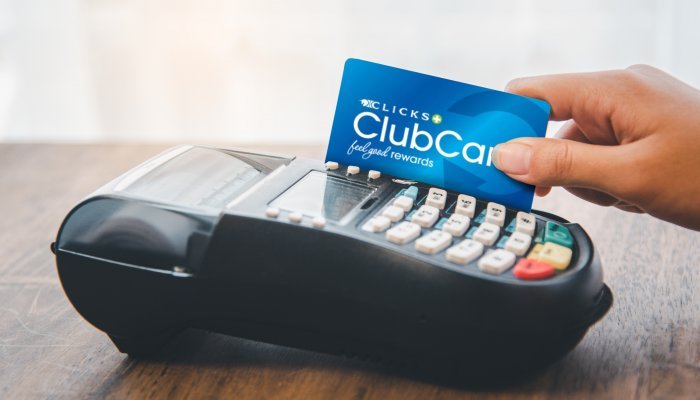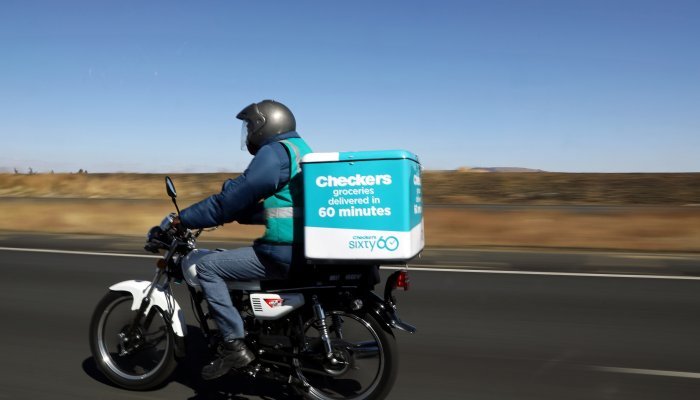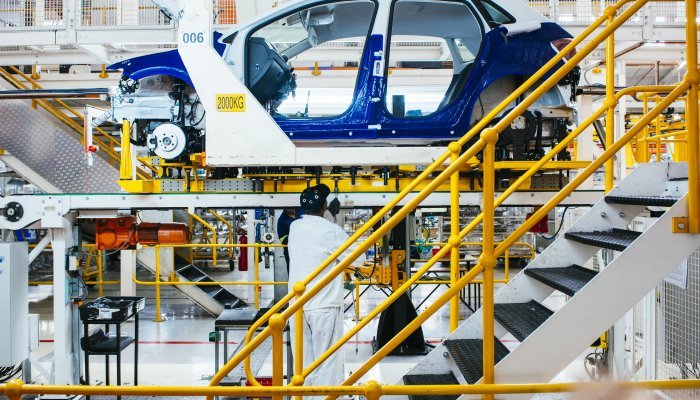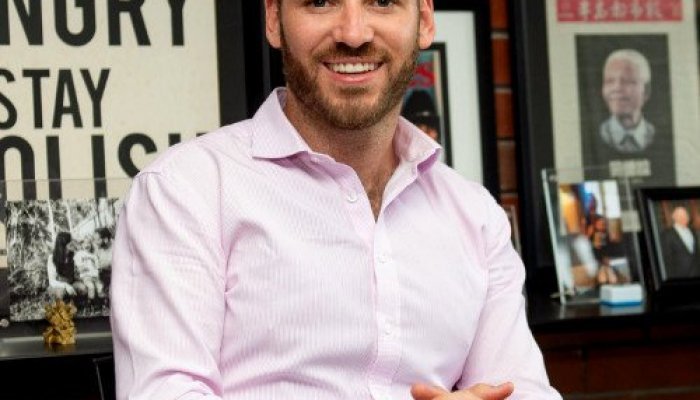Over four days late last year, the GIBS Retail Industry Insights 2022 Conference in Association with Trade Intelligence covered the biggest trials and triumphs faced by companies in South Africa. Realities of an ailing economy, environmental disasters, civil unrest and reduced household budgets comprised some of the most pressing topics.
Representing both established retailers and disruptors, speakers shared insights on how they’re keeping their businesses adaptable to constant change while maintaining their core identity.
Discussions around technological solutions, the benefits of customer loyalty programmes and lessons from top performers showed that while there are problems to be overcome, opportunities are also in plentiful supply.
Crisis, contingencies and calm in the local retail sector
To survive in a landscape that's competitive and constantly in flux, companies need to be adaptable and attentive
Over the course of 2022, almost 13 million South Africans shopped online. Excluding sales of data, airtime and electricity, the purchases reflect a growing inclination to buy items such as groceries, clothing, homeware and gifts, virtually. According to research firm Eighty20, this is a 6% increase from 2021.
Brands still relying solely on sales from physical stores are losing out on revenue opportunities seen by strong performers such as Superbalist, Mr Price and Pick n Pay. Checkers Sixty60 grew turnover by 150% from July 2021 to July 2022. This growth shows that the company is responding rapidly to changes in consumer needs and behaviour.
Following the money
As discussed during the first day of the conference, behaviours that might once have been the cornerstone of profitability are no longer yielding the same margins. The session titled The Competitive Landscape, (What are We Seeing?) was opened by Group CEO of Pick n Pay, Pieter Boone. He told delegates that prioritising consumers is critical. “Retail is a people business. Customer needs such as price, range, and service are consistent across markets and demographics.”
Boone stressed that “consumers and the economy are under immense cost pressure, and affordability is a key element for customers when making purchase decisions. Bargain hunting and promotional activity are key for attracting customers.”
Some of the challenges that retailers are currently facing include the need to build a sustainable online value proposition, and loadshedding, which has resulted in significant additional costs.
Customers are also increasingly expecting a variety of retail channels from one brand. Though online penetration has increased across the country, Boone explained that physical stores remain an essential part of their grocery offering. “The South African market is diverse and sizable. While Pick n Pay’s centralised structure brought efficiency, we also have a responsibility to support local vendors,” he stated.
One of the major benefits of online shopping to consumers is that price comparisons are easy and quick. Consequently, brand loyalty can easily be undermined or shifted when a better deal is one click away. Consumers are motivated by savings and convenience, so retailers must meet their needs in order to survive, Boone said.
Solutions that drive sales
Loyalty programmes and promotions can attract customers to specific brands. Michael Smollan, who is the chief growth and innovation officer for the Smollan Group, highlighted that they are a potential counter to lower consumer confidence and the rising cost of living. “Real incomes are being eroded by high inflation. We are seeing pressure from absolutely every angle.” Smollan stressed that loyalty initiatives must strike a balance between delivering value for the consumer and profitability for the retailer.
Arie Fabian, co-founder of collaborative retail space We Are EGG, shared how the start-up company has managed to draw interest from consumers. Stocking local and international brands of men and women’s fashion, beauty, wellness, gifting and homeware products, the business opened its first experiential and futuristic store at Cavendish Square, Cape Town in December 2020. Fabian revealed that despite the increasing move to online and omnichannel retail, its stores in Cavendish and Rosebank, Johannesburg were experiencing an increase in foot traffic. He believes this is because “people want a multisensory experience and want to understand the story behind the brand”.
The speakers shared their sentiments on rumours that Amazon will soon begin operations in the country. Ryan Bacher, managing director of Netflorist, said he thought the presence of a major international online retailing giant would be good for South African consumers, and for other brands in the e-commerce space. “Online retail in South Africa is still in its infancy. There is a lot of runway for growth,” he pointed out. “Brands such as Takealot will be kept on their toes, but they won’t go out of business on day one. Amazon do have some unique value propositions that are tough for anybody to compete with, but Takealot is a fantastic business that has a formidable presence in South Africa.”
KEY TAKEAWAYS
- Global supply chains: During Covid, manufacturers who were able to be flexible and a bit more local were able to overcome challenges of stock on the shelves, Michael Smollan noted. The supply chain is tricky at the moment. “Given what's going on in China, there is huge pressure on global supply chains and components that go into the end product. The ability to be flexible around your supply chain and to source more locally has become a big movement.”
- Customer ownership: “There’s a very interesting shift that’s started to take place where the brand owners understand that they have significant value if they can create a relationship with their customers,” said Ryan Bacher. “We’re seeing overseas companies like Nike pulling out from retailers and saying if you want to buy, you buy directly from us. We're not going to stock our product in third-party retailers.” Conventionally, in FMCG, brand owners such as Unilever or Procter & Gamble don’t have any relationship with their customers; the retailers have that. But Bacher predicted that change is coming. “I think over time there is going to start to be a relationship that Colgate will want to build with their consumers and that sometimes is going to be at the expense of Colgate's relationship with Pick and Pay or Massmart. I don't think anybody's figured out how that's going to work but there’s going to be a disruption between who owns the relationship with the customer.”
- Consolidation: Arie Fabian predicted that there’s going to be a massive consolidation of physical retail spaces. “When we sold out Fabiani and G-Star Raw to the Foschini Group, one of the metrics that publicly listed companies reported on was the growth of retail space. Now, it’s about consolidating, and how you actually drive up density per square metre. That’s one of your key metrics and what we’re finding is there’s simply too much retail space. South Africa has the sixth-highest density of shopping centres in the world and that certainly doesn’t match the strength of our consumer base.”
Pieter Boone’s retail principles
With more than 25 years’ experience in the retail and wholesale sectors, the CEO of Pick n Pay has drawn on these philosophies to foster personal and corporate success.
- Flexibility and adaptability are key in order to be successful. There’s never a dull moment in retail. It’s the most diverse type of business. People think it’s easy but there is a lot of complexity because the value chain has a lot of moving parts.
- Localisation means understanding and catering to the communities that you serve.
- Innovation can be with your people, with products, and even the service you have. It’s bringing new, quality products to the market.
- Technological disruption is happening. The retail world is changing rapidly. We must embrace new technology because customers demand speed, convenience and efficiency.
Giving the customer want they want and need
Are rewards programmes enough to drive and maintain brand loyalty?
The average South African is an active member of nine loyalty programmes, reveals research by Truth and BrandMapp. Published in 2022, the report provides a comprehensive breakdown of consumer responses to the various options available in the country.
“Retailers need to understand that loyalty is fickle,” said Ajay Lalu, co-founder of contactless payment solution Q-HOP, on the second day of the GIBS Retail Industry Insights conference. “The simpler the loyalty programme is, the better.”
When there is a measure of devotion from consumers, Truth and BrandMapp found it’s driven by the guarantee of an instant reward, and the possibility of building up points for bigger rewards.
According to the South African Loyalty Landscape whitepaper, usage of rewards and incentives offerings has increased steadily in the past seven years, with 67% of the population using them in 2015 and 73% in 2022. These statistics are encouraging for retailers, but also a cause for concern. Leading the pack of top performers is Clicks Clubcard, followed by Pick n Pay Smart Shopper, Checkers Xtra Savings, Dis-Chem Benefit and then Woolworths WRewards.
Many consumers have all five cards, meaning that if they have allegiance, it’s more likely to whichever brand meets the needs of a certain day rather than consistent faithfulness to one.
Win-win scenario
For market leader Clicks, many customers have built loyalty out of habit. Started in 1995, the reward scheme is one of the oldest in South Africa. It currently has 9.7 million customers and is reported to have paid out over R5.5 billion in cashback spend since inception. This has kept consumers satisfied while also being in the interests of the company.
There is a “battle of the wallets”, said Clicks Group brand executive Phathiswa Sefatsa, “but I think maybe, as Clicks, we are a bit fortunate because when you’re sick you have to get medication and therefore you will go to a pharmacy to buy what’s needed.” The group is gearing up for further expansion, with plans to open at least one new store per week over 52 weeks.
This bricks-and-mortar approach is partnered with heavy digital investing. It’s a response to ROPO, a new term coined to describe the behaviour of modern consumers, explained Sefatsa. “We're seeing that customers are doing a lot of their research online and they're going into store to purchase. We call that ‘research online and purchase offline’ (ROPO), and we’re trying to track that.”
Digging into the data
Loyalty programmes are useful in that they encourage repeat purchases and allow companies to solicit information about customer behaviours and preferences. This information can in turn be used by brands for personalisation of deals, rewards and gifts. Daily Maverick associate editor Neesa Moodley shared that while customers might once have been wary about such data being collected, many were starting to see how it could make for a better retail experience.
“As a journalist the best insight I’ve seen of data use has been the Shoprite Checkers group,” she said. “During Covid, they noticed that a lot more customers were buying pet food because everybody was getting a pet while they were sitting at home. They took the opportunity and opened a whole chain of stand-alone Petshop Science stores.”
Data can be used to notify customers on sales for items they purchase regularly, and as in the case of Checkers, to build new brands in response to changed behaviours. But, as Susan Mawer, the director of strategy and insights at home products line Tupperware, cautioned, the sales team and customers remain an important source of information and they should not be abandoned for tech-sourced data insights.
Analytics can help brands formulate the right questions for their market research. “Initiate a two-way conversation; it is critical to let customers know that you have heard them,” she advised.
However the data is collected, whether it’s from loyalty card swipes, general sales figures, or in-store behaviours, it needs to be interpreted so a response and course of action can be determined. Dave Hobbs, head of customer operations at specialist deal website OneDayOnly.co.za, said the recent final enforcement of the Protection of Personal Information Act (POPI) put a lot of stress on companies to manage data breaches and protect personal information.
Hobbs explained that from a team of more than three hundred people, OneDayOnly employs only two full-time data scientists. “We let machines do the bulk of the work to maintain the clarity and accuracy of the data.”
It’s critical to have systems to analyse information about customers for actionable insights, added Lalu. “Data is useful for understanding purchasing patterns and the needs of consumers. But the ability to understand your consumer is more important than offering a deal.”
Shopper needs shape shopper behaviour
Today's consumers are less predictable, better informed and more demanding, says Natasha Smith, managing director for Trade Intelligence. To keep up with evolutions in the retail industry, be aware of the five following needs and expectations.
- Value as a necessity: It’s no longer a nice-to-have but a necessity for the entire nation, not just for the lower-income consumer. There are also different ways to package value. It doesn’t only mean cheap prices. There’s a lot of commentary from the shopper that premiumisation is important so if you give me a great quality product, I'm happy to pay more.
- Demand for convenience: A smaller percentage of shoppers have this, but it’s still a huge number of consumers who want to shop closer to home. They want to shop quickly, more frequently. This is also the area where e-commerce comes into play.
- A great shopping experience: Research is being done offline, but shoppers are wanting to go back into stores. There is a desire to have some kind of interaction. They just look for where they’re going to go that will offer the best experience. When shoppers describe what a great experience is to them, some speak about quality, some about the cleanliness of the environment, others speak about matching or finding prices they saw online. There is an element of trust and predictability experienced in store.
- Healthy living: This is about options that enable consumers to thrive, and not just to survive. It’s the choice of plant-based instead of meat, for example. It’s a growing trend, but still only among a smaller group of shoppers.
- Conscious living: For some consumers, product transparency and community connection are important. Their need for conscious living is about the planet and community.
Strengths, weaknesses and opportunities in the SA retail industry
Tough times call for inventive and cost-effective solutions
Over the past few years, the local manufacturing sector has faced debilitating challenges, including load-shedding, port inefficiencies, decreased global demand for exports and price hikes in shipping costs. The industry, which contributes around 14% to GDP, has not yet returned to pre-pandemic levels.
Speaking on the third day of the GIBS Retail Industry Insights conference, Professor Justin Barnes, manufacturing ambassador at the Toyota Wessels Institute for Manufacturing Studies, noted that the contribution of manufacturing to GDP has fluctuated over the decades. One of the biggest drops was in 1994. “We lost a lot of competitiveness to imports,” he explained. This move towards a global model meant the country fell behind on manufacturing capacity and capability.
By the turn of the millennium, there was some growth, particularly in the clothing sector. “This was a period in which not only South African retail, but global retail was increasingly switching to essentially sourcing from wherever in the globe gave them the highest possible input margins. This drive towards increasing margins led to substantially improved performance, particularly when those increased margins didn't translate into increased prices.”
While in SA, the manufacturing portion of GDP has contracted from 21% in 1990 to just under 11% in recent times, it’s moved in the opposite direction in many other developing countries. “Most notably in places like China, Vietnam and Thailand you’ve got manufacturing as a percentage of GDP of around 30%, so it’s been a major driver of growth in a number of economies. They scaled up behind these opportunities, they created substantial capacity but also substantial capability.”
Examples to celebrate
A local company that has done this is Shoprite. It conceptualised Homegrown, a new private label range of food products, sourced from local small enterprises. Each of these will have access to market via Shoprite’s 534 supermarkets nationwide.
Some of the new suppliers include Exotic Taste, who’ll be providing mixed vegetables, cooking sauces and frozen samosas to selected stores. Exotic Taste was started in 2006 in the home kitchen of single mother Amina Abrahams. It now operates from a 200m2 factory in Kensington, Cape Town. Another major manufacturing player is the Volkswagen factory, which is located in Kariega in the Eastern Cape. It’s the biggest car factory on the African continent. VWSA currently builds the Polo Vivo for the local market and the Polo for all right-hand-drive markets worldwide and certain left-hand-drive markets. The Kariega plant is also the sole manufacturer worldwide of the Polo GTI. In May 2022, VWSA celebrated reaching its one-millionth Polo built for export.
These examples are encouraging and replicable. “The move towards regional value chains in the form of localisation and onshoring implies control in a world of disruptions,” said Barnes, “whether of energy costs, weather conditions or other external factors, and an attempt to understand the mix of supply chain complexities.”
New models and innovations
While there are logistical and environmental limitations that retailers must face, some of their challenges are internal, and can be overcome, said CEO and co-founder of Parcel Ninja, Justin Drennan.
He pointed out that grocery delivery requires a large footprint and an understanding of demand from a forecasting and fulfilment perspective. Many traditional stores aren’t built with modern needs in mind. For example, bread might be placed at the back of the store but be one of the products most frequently ordered online. However, in an e-commerce warehouse, the fast-moving items are likely to be close to pack stations. Shops need to realise that they now service both the physical and virtual customer.
“Up until now the retailers that have had the largest footprint have been able to dominate the space and will continue to. However, what they’re going to be doing – and Checkers is moving this way already – is that they’re going to stop putting all products in the store and rather build a purpose-built store or dark store for e-commerce fulfilment, where there’s the density and speed requirements to offer those services.”
Other trends that Drennan shared included brand disintermediation becoming more common as social media facilitates the move away from third-party retailers, and multi-delivery opportunities being presented to customers. Giving shoppers a range of options such as eco-friendly, delivery by drone, scheduled drop-off or self-collection is the next frontier that retailers should consider.
Case studies like Checkers Sixty60 show that despite numerous challenges, there is disruption and innovation in South Africa. “It’s just up to retailers to embrace it and take it on,” said Drennan.
Benefits of leading with local
Importing products or components can lead to cost savings, but there are many cases when local manufacturing is better for a retailer. The executive director of The Manufacturing Circle, Phillipa Rodseth, shared these three possible merits.
- Shorter supply chain: Lead times can be shorter allowing for more control and time for other functions.
- Quicker cash-flow cycles: During Covid, some of our member companies who switched to local suppliers recorded an increased turnover. Additionally, pricing can also be positively affected. As economies of scale increase, competitiveness is enhanced, and the unit cost of items can be reduced.
- Easier access: In the event of quality issues or changes necessitated by research & development, a local supplier or vendor is easier to contact than the owners of an imported container that’s come from far away. Being able to immediately address or connect with a manufacturer is more viable when they’re in the same region as you.
From start-up to stable
Former head of omnichannel for Pick n Pay, John Bradshaw, shared his advice to entrepreneurs.
If you're a South African with an idea or with a product, build a great brand and then think really creatively about all the different ways you can get it to your customer. Options for distribution are diverse. I think those ways are going to grow in the next few years.
There's potential for us to really go into a golden era of small local manufacturers of local brands, because there's so many different routes to market that are now emerging. You can set up a website through Shopify; you can have Parcel Ninja handle your logistics. There’s a huge route to market in the Takealot marketplace, and then when Amazon comes here, it’s likely to bring its own marketplace and fulfilment. I think there’s going to be a huge opportunity for local manufacturers and local brands or products to get distribution.
The way that you defend yourself against the behemoths arriving here is you have a tribe, you have a brand, a piece of uniqueness that lives in people’s hearts and their minds. We do have South African brands that have done that. We have Veldskoene, Devil’s Peak and a host of others that didn’t exist ten years ago. There are incredible brands that people seek out on whatever platform they can find them.
Ours is a great country to be involved in retail because we have the first world and the third world. We get to invent the future of retail here.

























